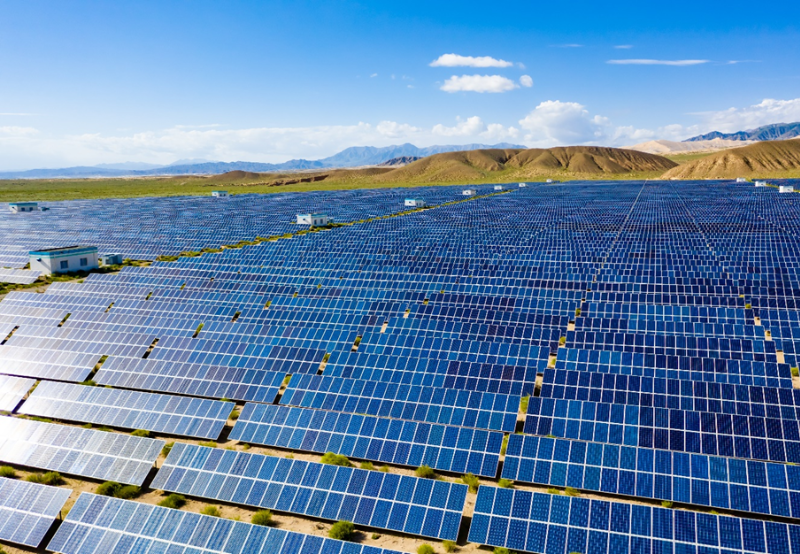[ad_1]
The newly launched National Center of Excellence for Green Port and Shipping (NCoEGPS) will help vital ports in the country source as much as 60% of their energy demand from renewable sources (solar and wind). Currently, less than 10% of the total energy demand for major ports is met by green energy.
Union Minister of Ports, Shipping and Waterways, Sarbananda Sonowal, launched NCoEGPS to boost the use of green solutions to transform ports and shipping.
The launch comes in the wake of all industrial sectors moving towards carbon neutrality and implementing circular economy measures ahead of the government’s commitment for 2070.
Indian ports aim to reduce carbon emissions by 30% by 2030 for per ton of cargo handled. India is already supplying shore power to ships with a power demand of less than 150 kW at present and targeting to supply shore power to all visiting vessels.
The main objective of NCoEGPS, which will work under the framework of the “Sagarmala Program,” is to provide support to the Ministry of Ports, Shipping and Waterways in developing and maintaining a policy and regulatory framework for a green alternative technologies roadmap for the shipping sector in India.
The work undertaken is also expected to provide the decision-makers at the national and sub-national level with methodology and framework to meet obligations under the Paris Accord through electrification of processes, renewable energy, carbon capture and storage, and other emerging alternative fuel technologies, including green fuels.
The Center would also host several technological arms to support the port and shipping sector and provide solutions to problems faced by the industry through scientific research.
It is also expected to carry out valuable education, applied for research and technology transfer in maritime transportation at the local, regional, national, and international levels. The focus areas include energy management tools, waste energy recovery systems, and emission management.
The Energy and Resources Institute (TERI) is the project’s knowledge and implementation partner. The Deendayal Port Authority Kandla, Paradip Port Authority, Paradip, V.O Chidambaranar Port Authority, Thoothukudi, and Cochin Shipyard Limited, Kochi, have all extended their support to the ministry to set up this center.
According to the ministry, globally, India stands fourth in renewable energy power capacity, fourth in wind power, and fifth in solar power capacity. According to Mercom India Research’s newly released Q3 2022 India Solar Market Update report, the country installed a record 10 GW of new solar capacity during the first nine months (9M) of 2022, an increase of 35% year-over-year (YoY).
Recently, at the UN Climate Change Conference (COP27) in Egypt, India unveiled a multi-pronged strategy to achieve low-carbon growth, which includes expanding and stabilizing the renewable electricity grid, increasing the adoption of electric vehicles, research and development into carbon removal and capture technologies, and the restoration and conservation of forests.
[ad_2]
Source link



 Gautamee is a staff reporter at Mercom India. Prior to Mercom, Gautamee was working as a multimedia news journalist at ThePrint in New Delhi. She has received her Bachelors in English Honors and Masters in English Literature from St.Stephen’s College, University of Delhi.More articles from Gautamee
Gautamee is a staff reporter at Mercom India. Prior to Mercom, Gautamee was working as a multimedia news journalist at ThePrint in New Delhi. She has received her Bachelors in English Honors and Masters in English Literature from St.Stephen’s College, University of Delhi.More articles from Gautamee




